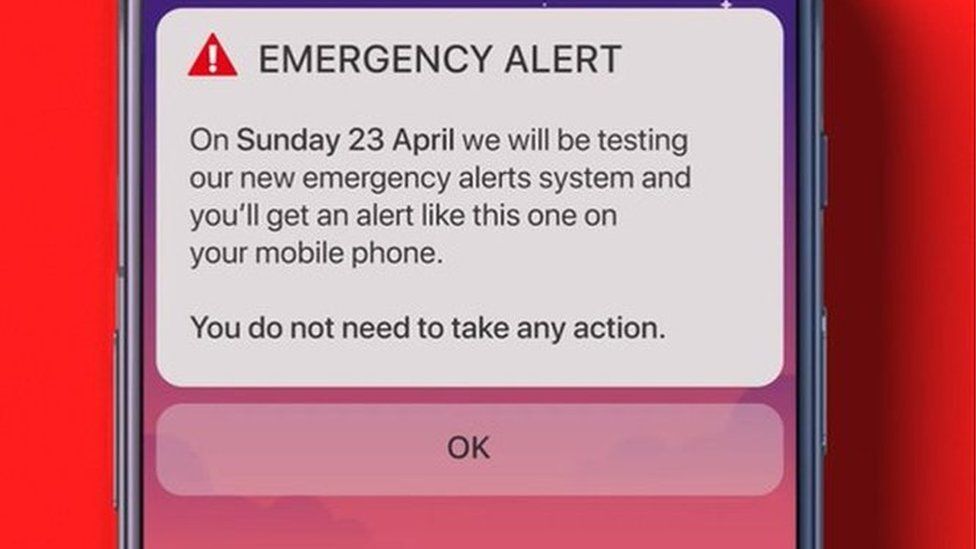[ad_1]

A UK-wide emergency alert system announced by the government is due to be tested on Sunday, 23 April.
A test alert will be sent out at 15:00 – a message will appear on the home screens of mobile phones and tablets, accompanied by a loud siren-like sound or vibration lasting for about 10 seconds.
The minister in charge of the system, Oliver Dowden, said the new system was a “vital tool to keep the public safe in life-threatening emergencies”.
What will the message say?
The test alert will say: “This is a test of Emergency Alerts, a new UK government service that will warn you if there’s a life-threatening emergency nearby.
“In a real emergency, follow the instructions in the alert to keep yourself and others safe.
“Visit gov.uk/alerts for more information.
“This is a test. You do not need to take any action.”
In what situations could emergency alerts be used?
Emergency alerts, with advice about how to stay safe, will be sent – locally or nationally, by the government or emergency services – on rare occasions where there is a threat to life.
They will initially focus on the most serious weather-related events, such as:
- severe flooding
- fires
- extreme weather
Phone or tablet users will have to acknowledge the alert before they can use other features on their devices.
But many people will not receive an alert for months, perhaps even years.
What devices are compatible with alerts?
The alerts will work on all 4G and 5G phone networks in the UK and on devices with the following software:
- iPhones running iOS 14.5 or later
- phones and tablets running Android 11 or later
There is no need to register or download an application. But older “non-smart” phones will be unable to receive the alerts, as will devices that are turned off or on airplane mode.
The government has said the emergency services will have other ways to notify those without a compatible device.
And the alerts will not replace local news, radio or social media.
Can users turn off emergency alerts?
Despite the government strongly recommending enabling devices to receive alerts, users can opt out by searching their settings for “emergency alerts” and turning off “severe alerts” and “extreme alerts”.
Is personal data protected?
Personal data about a user’s device or specific location will not be collected or shared, according to the Cabinet Office.
The alerts will be broadcast from mobile-phone masts to every compatible phone and tablet within range – the government or emergency services do not need to know the mobile-phone number or any other personal data.
Are there other concerns?
Domestic-abuse campaigners, including the charity Refuge, say the test could endanger some vulnerable people by alerting an abuser to the location of a hidden phone.
The government said it had been engaging with the organisations to ensure vulnerable people were not adversely affected. And Refuge has produced a video showing how to turn off the alerts.
Drivers are also advised not to look at or touch their phone until it is safe to do so, just as when receiving calls or messages.
Do other countries use emergency alerts?
Many countries around the world use emergency-alert systems, including the United States, the Netherlands and Japan.
Japan credits its system with saving countless lives in natural disasters.
The US system allows the president to send a message to citizens directly.
But it does not always go to plan.
In 2018, in the US state of Hawaii, an alert warning of an incoming missile was sent in error, causing panic.
Related Internet Links
The BBC is not responsible for the content of external sites.
[ad_2]
Source link
